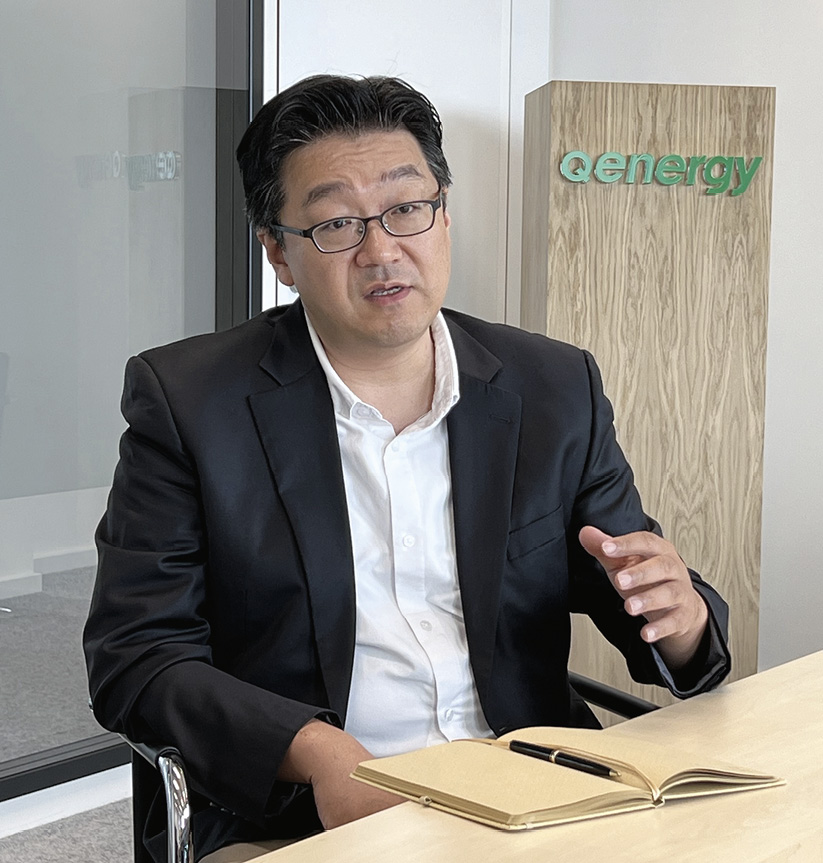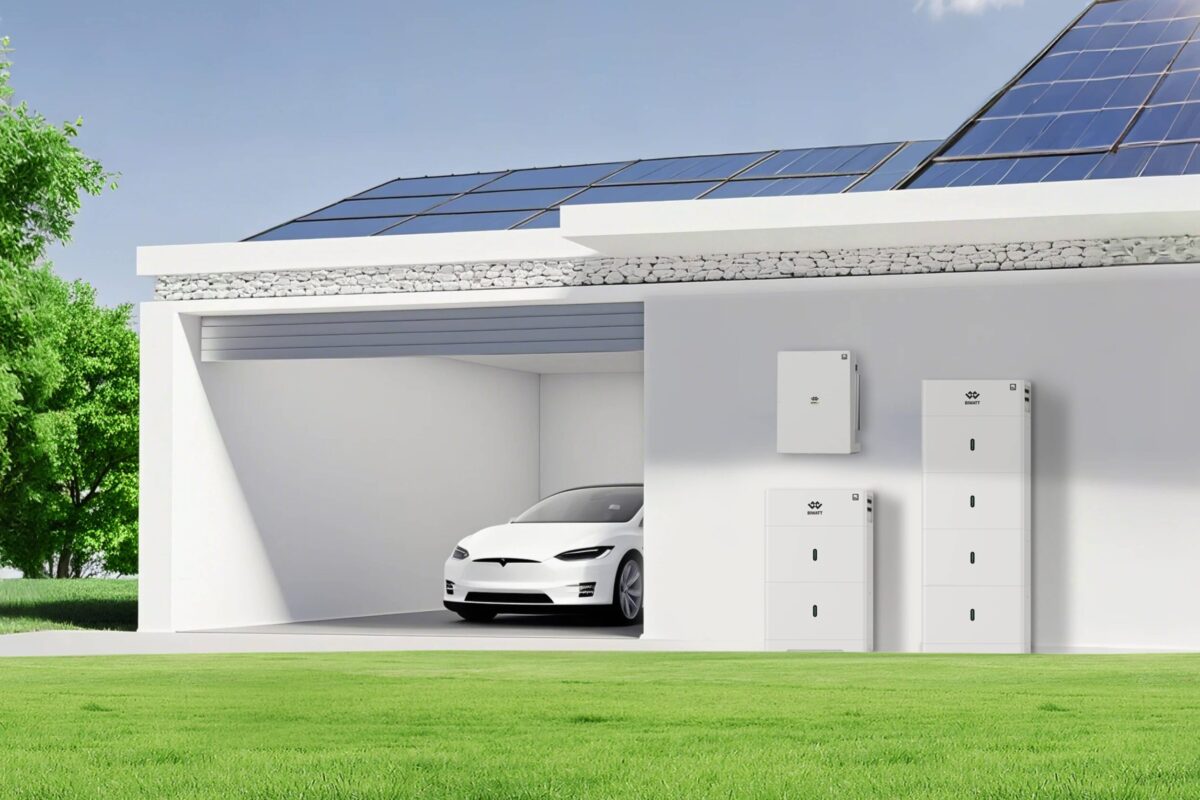Hanwha Group recently reorgnized its downstream solar business in Europe and launched the Q Energy Solutions SE entity. Does this mean the company is now coordinating its activities across Europe?
It is our ambition to tackle the European renewable energy market with a strong new brand. For this purpose, we launched Q Energy on July 1. It’s comprised of three companies – a Berlin based holding company and two subsidiaries, which combine experience from more than 20 years of successful projects, particularly in solar and wind. On top of these, we will also engage in energy storage and later in green hydrogen, and act as an independent power producer.
Our goal is to accelerate the deployment of renewable energies in Europe across all market segments. This is the only way forward to lower carbon emissions while at the same time reaching higher energy independence. We are convinced that Q Energy is entering the scene at exactly the right point in time to be part of the solution for Europe’s energy challenges.
The newly created Q Energy currently owns a PV project pipeline of over 9 GW in France, Spain, Portugal and Germany. What is your opinion of the growth opportunities for large-scale PV in these countries?
These are our core markets, and we see great opportunities in all of them. The annual installation volumes of large-scale PV and wind capacities will have to grow significantly if these countries want to reach their goals of reducing carbon emissions by 2030 and beyond. Installation targets for solar and other renewables look promising. However, we call upon the national governments to further remove obstacles and dramatically de-complicate permitting procedures.
Take Germany: The government has announced the target to increase accumulated PV installations by roughly 155 GW in less than nine years, of which about 50% are supposed to be large scale PV. We strongly support the target and see first positive measures. However, the permitting times between acquiring the land and actually putting the plant into operation have to significantly decrease from today’s reality of two to four years.
Solar module and inverter prices are currently high. Do you believe this may halt some projects in the European markets?
We hope not. It is true that prices for modules, mounting systems and substations are increasing, but so are electricity prices and revenue potentials in general. This should balance the effects of higher material cost. Current political measures to mitigate the energy price crisis also come into play. Short-term visibility and plannability are low. But in the long run, accelerating the deployment of renewable energy can solve our problems and that is what we are committed to.
Are potential future price hikes sustainable for the solar sector? Do you see a critical threshold approaching?
The current price increases in PV are a direct result of Covid-19 and the unstable geopolitical situation. In this sense, they are part of a general trend and not an industry-specific issue. The biggest challenge for the sector in the coming years will be about satisfying the growing global hunger for reliable PV systems, while at the same time ensuring that solar energy will remain the cheapest way of producing and consuming electricity.
Is the company making special plans in the event that supply chain conditions worsen? What kind of advantage is it that Hanwha Group also produces solar modules?
Being part of a global company like Hanwha is an advantage in many respects – bankability of course, but also regarding its prowess in sustainable high-tech materials for green energy solutions. Regarding solar modules, however, it will be important for us to ensure a diversified supplier portfolio. While QCells is our sister company and a potential module supplier, we are independent in our decision making. We will purchase solar modules from the free market according to the usual competitive criteria like quality, availability, and price.
Q Energy also plans to expand in the UK, the Netherlands and Italy. Will being a late mover represent an advantage or rather the opposite?
Q Energy is expanding into these markets at exactly the right point in time. All three show great untapped potentials for large-scale PV, wind and storage projects and Q Energy will leverage them in the coming years. In fact, just recently we entered into an agreement to co-develop 21 projects in the Netherlands – a portfolio of around 300 MW in total. We have also secured the first development project in the UK.
What kind of projects are currently under development or construction? Is storage or hydrogen in combination with solar power generation being considered?
On the PV side, most of our projects are ground mounted, some of which use trackers, like in Spain, some fixed, like in France. Energy storage solutions in combination with PV are already a reality and will become even more important in the coming years: In Portugal, around 300 MW of our projects will combine PV with energy storage; the UK is attractive for storage solutions as well. And France is not only one of our most important markets, but also an innovation hub: Just recently, we received the green light to go ahead with the largest floating PV project in France on a former quarry. With a pipeline of 200 MW of floating projects Q Energy is already one of the main players in this sector in France.
We are convinced that green hydrogen will play a major role in the future, and we are actively pursuing it. The markets for green hydrogen still need to mature, but we will certainly engage in green hydrogen projects in the coming years.
Europe is hosting several government programs to develop agrivoltaic solutions. Is the company planning to take part in this market sub-segment?
The idea of growing crops while shading the plants and producing clean energy simultaneously is indeed intriguing. What will be important for its expansion though is simple and clear regulation all the way down to the community level. The situation really differs from country to country. In France we are already active in that niche. Over the summer, we inaugurated our first two prototypes. One of them, a so called hydrovoltaic prototype, will even cover the watering of the plants.
We’re closely monitoring Germany for its agrivoltaic potential as well. While the German government promotes the idea, the measures in the revised EEG are not yet enough to create a competitive business model. The current bonus scheme applies only to horizontal agrivoltaic projects within regular tenders. However, the projects won’t be competitive against regular ground mounted projects. Instead, special concepts like agrivoltaics, but also floating PV, should go into dedicated tenders.
This content is protected by copyright and may not be reused. If you want to cooperate with us and would like to reuse some of our content, please contact: editors@pv-magazine.com.



3 comments
By submitting this form you agree to pv magazine using your data for the purposes of publishing your comment.
Your personal data will only be disclosed or otherwise transmitted to third parties for the purposes of spam filtering or if this is necessary for technical maintenance of the website. Any other transfer to third parties will not take place unless this is justified on the basis of applicable data protection regulations or if pv magazine is legally obliged to do so.
You may revoke this consent at any time with effect for the future, in which case your personal data will be deleted immediately. Otherwise, your data will be deleted if pv magazine has processed your request or the purpose of data storage is fulfilled.
Further information on data privacy can be found in our Data Protection Policy.